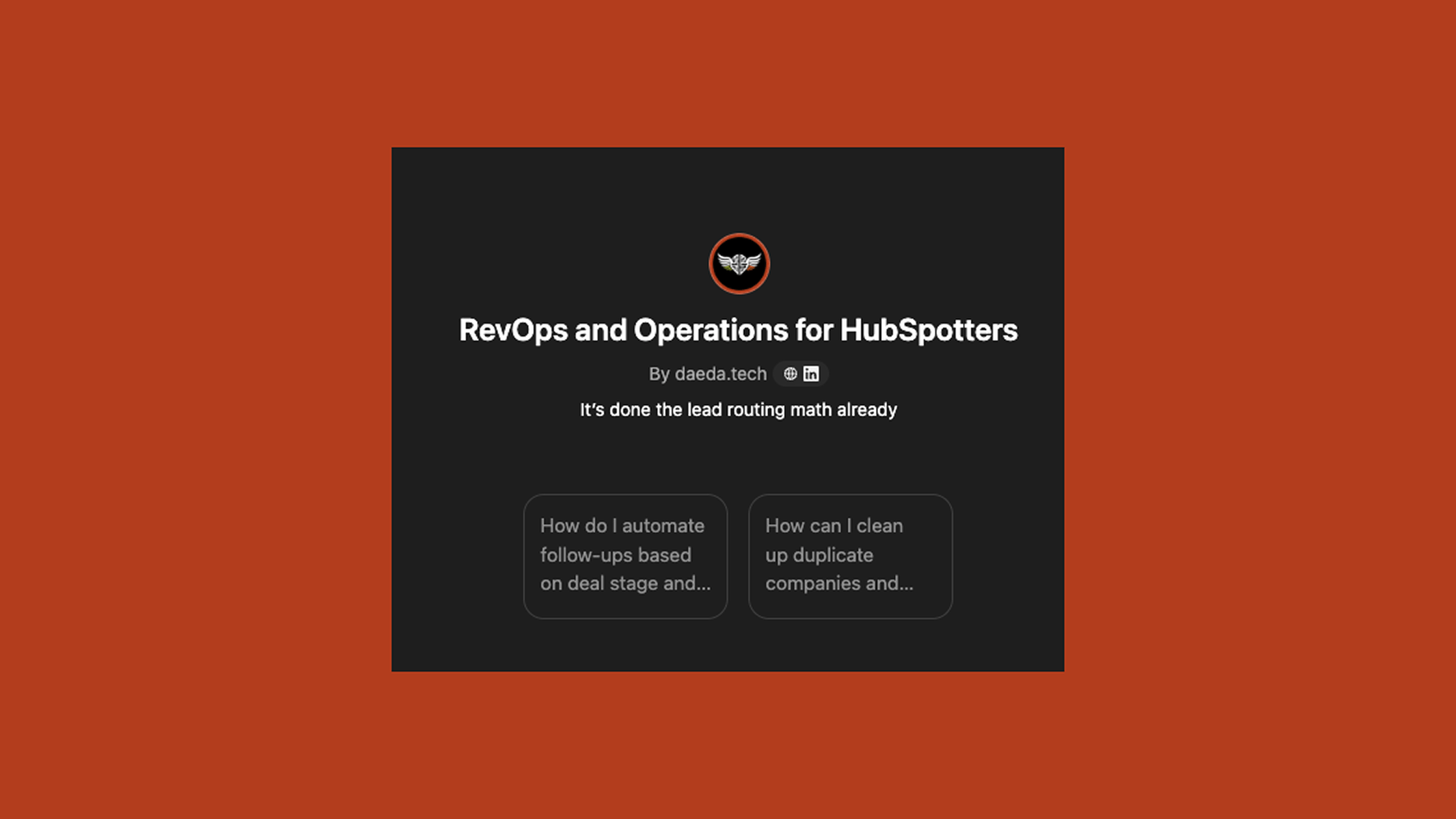
There’s a quiet little tragedy playing out in RevOps teams.
It starts small - someone wants to track a new lead, so they stick it in a deal pipeline.
Next thing you know, your sales pipeline is full of marketing leads, internal processes, and even a task to remind your AE to follow up with Tim.
HubSpot gives you lifecycle stages, custom properties, and a CRM architecture that wants to stay clean - but you threw it all into the deal board.
We asked the RevOps and Operations for HubSpotters GPT to review this setup, and it didn’t hold back:
“Using pipelines for lead management creates automation chaos.”
If you’ve ever opened your pipelines and thought, this doesn’t feel right - you’re not imagining things. You’re just duct-taping your HubSpot setup into something barely workable.
The GPT doesn’t just call it out. It gives you a clear plan to fix it.
Here are the exact recommendations it gave:
If you’re the one constantly patching things together - building extra workflows, adding weird properties, creating “just one more” pipeline to make it all work - you’re exactly who this GPT was trained for.
The RevOps and Operations for HubSpotters GPT has already done the lead routing math. It’s designed to spot messy setups and show you the clean way to do it.
Try the GPT and see what it digs up in your portal. If it finds pipeline chaos, don’t be surprised - it’s probably been sitting there for months.
